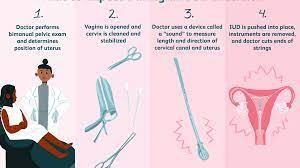 When a loved one experiences a stroke, the journey to recovery often extends beyond the hospital stay. Providing care at home becomes essential, with unique challenges and responsibilities. Here are some important tips to guide you in offering practical and compassionate stroke recovery care in the comfort of your home.
When a loved one experiences a stroke, the journey to recovery often extends beyond the hospital stay. Providing care at home becomes essential, with unique challenges and responsibilities. Here are some important tips to guide you in offering practical and compassionate stroke recovery care in the comfort of your home.
- Educate Yourself: Understand the Impact of Stroke
Before diving into caregiving, take the time to educate yourself about the specific type of stroke your loved one experienced and its potential effects. Understanding the physical, cognitive, and emotional challenges associated with stroke will better equip you to provide targeted care and support.
- Create a Supportive Environment
Adapting your home to be supportive of stroke recovery is crucial. Make necessary modifications to enhance accessibility, such as installing grab bars in the bathroom, ensuring clear pathways, and creating a comfortable and safe sleeping space. These adjustments promote independence and reduce the risk of accidents.
- Collaborate with Healthcare Professionals
Establish open communication with the healthcare team involved in your loved one’s stroke recovery. Regularly consult with physicians, therapists, and other specialists to stay informed about the rehabilitation plan and make necessary adjustments to the home care routine. This collaboration ensures a holistic and coordinated approach to recovery.
- Develop a Routine
Consistency is critical in stroke recovery care. Establish a daily routine incorporating rehabilitation exercises, medication schedules, and personal care activities. A structured routine provides a sense of predictability and stability, which benefits both the caregiver and the individual recovering from a stroke.
- Focus on Physical Therapy
Physical therapy plays a crucial role in stroke recovery. Work closely with the rehabilitation team to implement recommended exercises and activities at home. Regular physical activity helps improve mobility, strength, and coordination. Be patient and encouraging, and celebrate small victories along the way.
- Prioritize Medication Management
Stroke survivors often require medication to manage various health aspects. Establish a clear medication schedule, organize pill dispensers, and set reminders to ensure that medications are taken as prescribed. Recording drugs and any observed side effects will be valuable during medical consultations.
- Foster Emotional Support
Stroke recovery is not only physical but emotional as well. Offer emotional support and encouragement to your loved one. Be attentive to their feelings, provide reassurance, and actively listen. Engage in activities that bring joy and contribute to a positive emotional state, as mental well-being is integral to recovery.
- Ensure a Balanced Diet
A healthy diet is essential for stroke recovery. Work with a nutritionist to develop a balanced and nourishing meal plan that meets your loved one’s specific needs. Include foods rich in nutrients that support brain health and overall well-being. Proper nutrition contributes to energy levels, which are crucial for rehabilitation efforts.
- Communication Strategies
Stroke survivors may face challenges with communication, which can be frustrating for both the individual and the caregiver. Implement effective communication strategies, such as using clear and straightforward language, allowing adequate response time, and using visual aids if needed. Patience and understanding are vital in facilitating meaningful communication.
- Take Care of Yourself
Caring for a stroke survivor can be emotionally and physically demanding. It’s essential to prioritize your well-being. Schedule breaks, seek support from family or friends, and consider respite care if necessary. Taking care of yourself ensures that you can provide the best possible care to your loved one in the long run.
Wrapping up
Providing Stroke Recovery Care at Home is a challenging yet rewarding journey. By staying informed, creating a supportive environment, collaborating with healthcare professionals, and focusing on physical therapy and emotional support, you contribute significantly to your loved one’s recovery. Remember to establish routines, manage medications, ensure a balanced diet, use effective communication strategies, and, most importantly, take care of yourself. Together, as a dedicated caregiver and a supportive family, you can navigate the path of stroke recovery with compassion, resilience, and a commitment to improving the quality of life for your loved one.

 Chiropractic adjustment, also known as spinal manipulation, is a therapeutic technique performed by chiropractors to treat musculoskeletal conditions. It involves applying a controlled force to a specific joint in the spine or other parts of the body in order to restore joint mobility, alleviate pain, and improve overall physical function.
Chiropractic adjustment, also known as spinal manipulation, is a therapeutic technique performed by chiropractors to treat musculoskeletal conditions. It involves applying a controlled force to a specific joint in the spine or other parts of the body in order to restore joint mobility, alleviate pain, and improve overall physical function. Excessive heavy metal exposure can be hazardous to the human body. Some foods and drugs can help the body remove heavy metals. Such substances are used for this purpose as
Excessive heavy metal exposure can be hazardous to the human body. Some foods and drugs can help the body remove heavy metals. Such substances are used for this purpose as  You can use delta-9 THC products for energy boosts. The most well-known and widely used cannabinoid found in cannabis and hemp is delta 9 THC. Cannabis enthusiasts know that many cannabis compounds can affect the body and mind.
You can use delta-9 THC products for energy boosts. The most well-known and widely used cannabinoid found in cannabis and hemp is delta 9 THC. Cannabis enthusiasts know that many cannabis compounds can affect the body and mind.


